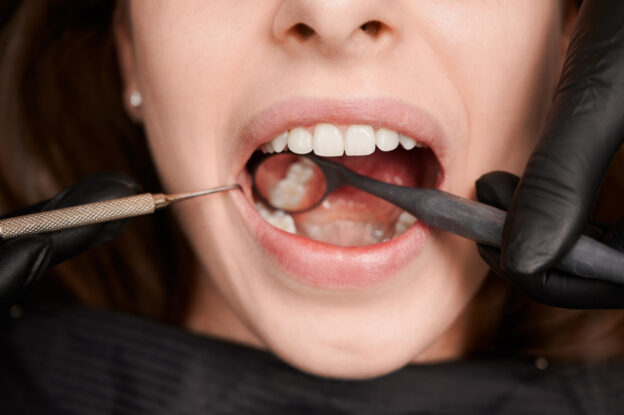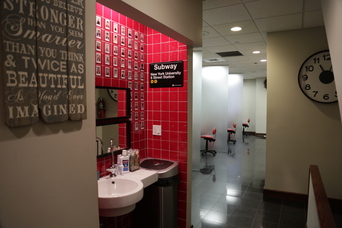If you are considering braces for yourself or your child, you may be wondering about lingual braces. What are they? How do they work? Are they right for me? In this blog post, we will answer all of your questions and give you ten facts that you need to know about lingual braces in NYC!
In a nutshell, lingual braces are braces that are placed on the tongue-side of your teeth, rather than the cheek-side like traditional braces. This makes them virtually invisible to other people!
Here are 10 facts you need to know about lingual braces!
#1 – They are just as effective as traditional braces.
Lingual braces work in the same way as traditional braces, by gradually moving your teeth into alignment. They are just as effective at straightening teeth, and can be used to treat the same types of orthodontic issues.
#2 – They take some time to get used to.
Since they are placed on the tongue-side of your teeth, it can take a little while to get used to the feeling of lingual braces. However, most people adjust within a few weeks and find them quite comfortable.
#3 – They require extra oral hygiene.
Because lingual braces are on the tongue-side of your teeth, they can trap food and bacteria more easily. This means that you need to be extra diligent with your oral hygiene, brushing and flossing well to avoid plaque build-up.
#4 – They are custom made for each patient.
Lingual braces are made from a mold of your teeth, so they are completely customized for each patient. This ensures a comfortable and precise fit.
#5 – Treatment time varies.
The length of treatment with lingual braces varies depending on the individual case, but is typically 18-24 months. With traditional braces, treatment time averages around 24 months.
#6 – They are generally more expensive than traditional braces.
Lingual braces are generally more expensive than traditional braces. This is because they are custom made and require extra time and care from your orthodontist.
If you want minimally visible yet more affordable treatment, you can also consider clear braces in Manhattan. They are made of clear ceramic, so they blend in well with your teeth.
#7 – You may experience minimal speech difficulty with lingual braces in NYC.
Since lingual braces are placed on the tongue-side of your teeth, some patients may experience minimal speech difficulty. However, this typically goes away after a few weeks as you get used to the braces.
#8 – Some patients find lingual braces more comfortable than traditional braces.
Since lingual braces are on the tongue-side of your teeth, they put less pressure on your gums and cheeks than traditional braces. This can make them more comfortable for some patients.
#9 – They can be used in conjunction with other treatments.
Lingual braces can be used in conjunction with other treatments, such as Invisalign. This can help to achieve the best possible results for your smile!
#10 – There’s a type of lingual braces that adjusts automatically.
Self-ligating braces are a type of lingual braces that adjust automatically as your teeth move, which can save you time and hassle during your orthodontic treatment.
Getting Lingual Braces in NYC
Now that you know all about lingual braces in NYC, you may be wondering where to get them in the city. At House of Orthodontia, we offer a variety of orthodontic treatments, including lingual braces! We custom-design each patient’s treatment plan to ensure the best possible results.
Aside from lingual braces, we also offer Invisalign (as well as Invisalign Teen Greenpoint NY/Invisalign Teen Manhattan), clear braces, and traditional braces. Not just that, but House of Orthodontia also caters to accelerated orthodontics in East Village NYC for patients who want to get their treatment done faster.
If you’re interested in getting lingual braces in NYC, or are looking for an orthodontist in Manhattan/orthodontist in Brooklyn, contact us today to schedule a consultation!
We’ll be happy to answer any of your questions and help you decide if lingual braces in Brooklyn area or any of our locations are the right treatment for you.




